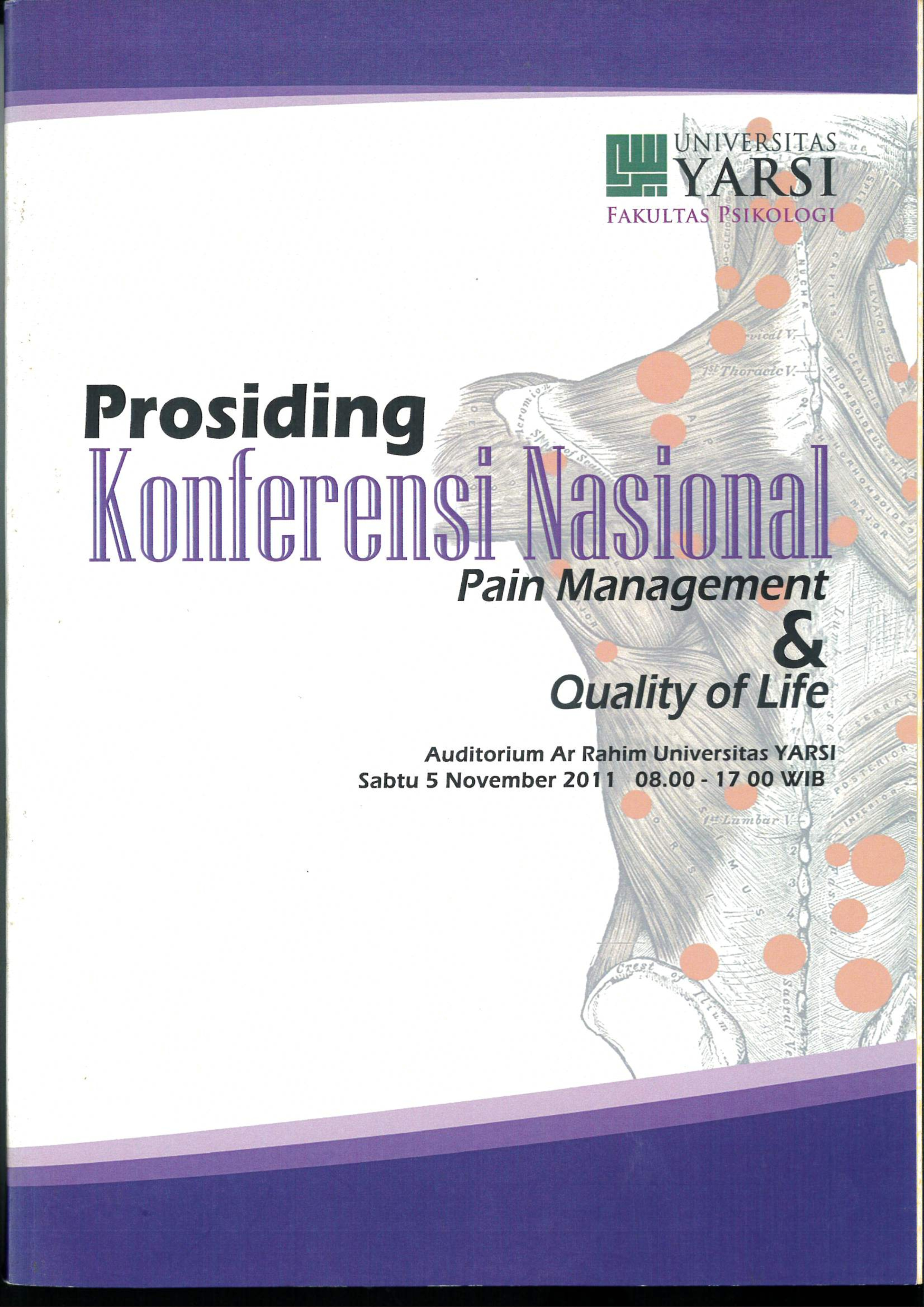Status Kesehatan Dan Proteksi Diri Ditinjau Dari Strategi Mengatasi Rasa Sakit Dan Pusat Kendali Pada Remaja
Keywords:
lokus kendali, strategi mengatasi sakit, proteksi diri, status kesehatan, Kesehatan, remajaAbstract
Problem kesehatan remaja di sekolah banyak di jumpai tetapi kurang memperoleh perhatian. Usaha prevensi dan promosi kesehatan di kalangan anak dan remaja merupakan issu penting untuk peningkatan kesejahteraan mereka di masa sekarang dan di masa depannya. Status kesehatan mereka pada dasarnya berkaitan dengan perilakunya. Tujuan penelitian ini adalah untuk mengetahui pengaruh lokus kendali dan strategi mengatasi rasa sakit terhadap proteksi diri dan status kesehatan. Penelitian melibatkan 150 siswa SMP usia antara 12-16 tahun (M=14.52, SD=2.65) terdiri dari 75 siswa laki-laki dan 75 siswa perempuan. Sebagian besar adalah dari keluarga kelas social menengah. Data dikumpulkan dengan skala Locus of Control Scale, Body Investment Scale, Pain Respon Invertory, dan Daftar Cek Masalah. Analisa data menggunakan analisis korelasi dan regresi dan korelasi. Hasil penelitian menunjukkan lokus kendali individu mempengaruhi strategi dalam mengatasi rasa sakit (F=0.922, p<0.01), tetapi tidak mempengaruhi proteksi diri dan status kesehatan. Strategi mengatasi rasa sakit mempengaruhi proteksi diri (F=7.785, p<0.01) dan status kesehatan (F=4.888, p<0.05), dan proteksi diri mempengaruhi status kesehatan (F=6.681, p<0.05). Berdasarkan hasil analisis ini direkomendasikan agar dalam meningkatkan status kesehatan remaja perlu dapat dilakukan melalui kemampuan remaja dalam melakukan proteksi diri, pembinaan dalam strategi mengatasi rasa sakit, dan lokus kendali. Implikasi hasil penelitian ini terhadap penyelenggaraan konseling kesehatan, intervensi promosi dan prevensi kesehatan untuk remaja di sekolah.
References
Balmer, D. H., Gikundi, E., Billingsly, M. C., Kihuho, F. G., Kimani, M., Wong‟ondu, J., & Njoroge, H. (1997). Adolescent knowledge, values, and coping strategies: Implications for health in sub-Saharan Africa. Journal of Adolescence Health, 21 (1), 33-38.
Brahler, J., & Cropper, J. (2008). The mind-body connection: The association between adolescent locus of control and indicators of physical health. Journal of Exercise Physiologyonline (JEPonline), 11 (1), 1-8.
Büssing, A., Ostermann, T., Neugebauer, E. A., & Heusser, P. (2010). Adaptive coping strategies in patients with chronic pain conditions and their interpretation of disease. BMC Public Health, 10, 507-607. Diakses dari http://www.biomedcentral.com, pada 19 Agustus 2011.
Cano, A., Mayo, A., & Ventimiglia, M. (2006). Coping, pain eeverity, interference, and disability: The potential mediating and moderating roles of race and education. Journal of Pain, 7 (7), 459–468.
Chartier, M. J., Walker, J. R., & Naimark, B., (2009) Health risk behaviors and mental health problems as mediators of the relationship between childhood abuse and adult health. American Journal of Public Health, 99 (5), 847–854.
Collins, M. M., Bradley, C. P., O'Sullivan, T., & Perry, I. J. (2009). Self-care coping strategies in people with diabetes: A qualitative exploratory study. BMC Endocrine Disorders 9, 6-15. Doi:10.1186/1472-6823-9-6. Diakses dari http://www.biomedcentral.com/1472-6823/9/6.
Evans, P. (1988). Stress and coping. Dalam M. Pitts & K. Phillips (ed.), The psychological of health: An introduction (pp. 47-67). New York: Routledge.
Ghorpade, J., Hattrup, K., & Lackritz, J.R. (1999). The use of personality in cross-cultural research: A test of three personality scale across two countries. Journal of Applied Psychology, 84 (5), 670-679.
Gorely, T, Nevill1, M.E., Morris, J. G., Stensel, D. J., & Nevill, A. (2009). Effect of a school-based intervention to promote healthy lifestyles in 7–11 year old children. International Journal of Behavioral Nutrition and Physical Activity, 6, 5-17. Diakses dari http://www.ijbnpa.org/content/6/1/5.
Hedlund, M., Ronne-Engström, E., Carlsson, M. & Ekselius, L. (2010) Coping strategies, health-related quality of life and psychiatric history in patients with aneurysmal subarachnoid haemorrhage. Acta Neurochir, 152, 1375–1382
Lawrence, R. S., Gootman, J. A., Sim, L. J. (eds. 2009). Adolescent health services: Missing opportunities. Washington, DC: The National Academies Press.
Latipun. (2009). Masalah-masalah siswa: Analisis terhadap DCM siswa SMP di Malang. Laporan Penelitian, Universitas Muhammadiyah Malang.
Lohaus, A., Klien-Hessling, J., Ball, J., & Wild, M. (2004). The prediction of health-related behavior in Elementary School Chindren. Journal of Health Psychology, 9 (3), 375-379.
Lohman, B. J. & Jarvis, P. A. (2000). Adolescent stressors, coping strategies, and psychological health studies in the family context. Journal of Youth and Adolescent, 29 (1), 15-43
Orbach, I., & Mikulincer, M. (1998). The body investment scale: Construction and validation of body experience scale. Psychological Assessment, 10 (4), 415-425.
Phillips, S. (2003). Adolescent health. Dalam A. M. Nezu, C. M. Nezu, P. A. Geller, & I. B. Weiner (Ed.), Handbook of psychology (pp. 465-585). Hoboken, New Jersey: John Wiley & Son, Inc.
Slap, G. B. (ed., 2008). Adolescent medicine: The requisites in pediatric. Philadelphia, PA: Mosby Elsevier.
Sung, K. M., Puskar, K. R. & Sereika, S. (2006). Psychological factors and coping strategies of adolescents in a rural Pennsylvania high school. Public Health Journal, 23 (6), 523-530.
Walker, L.S., Smith, C.A., Garber, J., & van Slyke, D.A. (1997). Development and validation of the pain response inventory for children. Psychological Assessment, 9 (4), 392-405.
Downloads
Published
Issue
Section
License
Copyright (c) 2025 Latipun, Dwi Sari Usop, Siska Andri Ekaningrum, Istiqomah

This work is licensed under a Creative Commons Attribution-NonCommercial-ShareAlike 4.0 International License.

 Latipun
Latipun
 Universitas Muhammadiyah Malang
Universitas Muhammadiyah Malang



